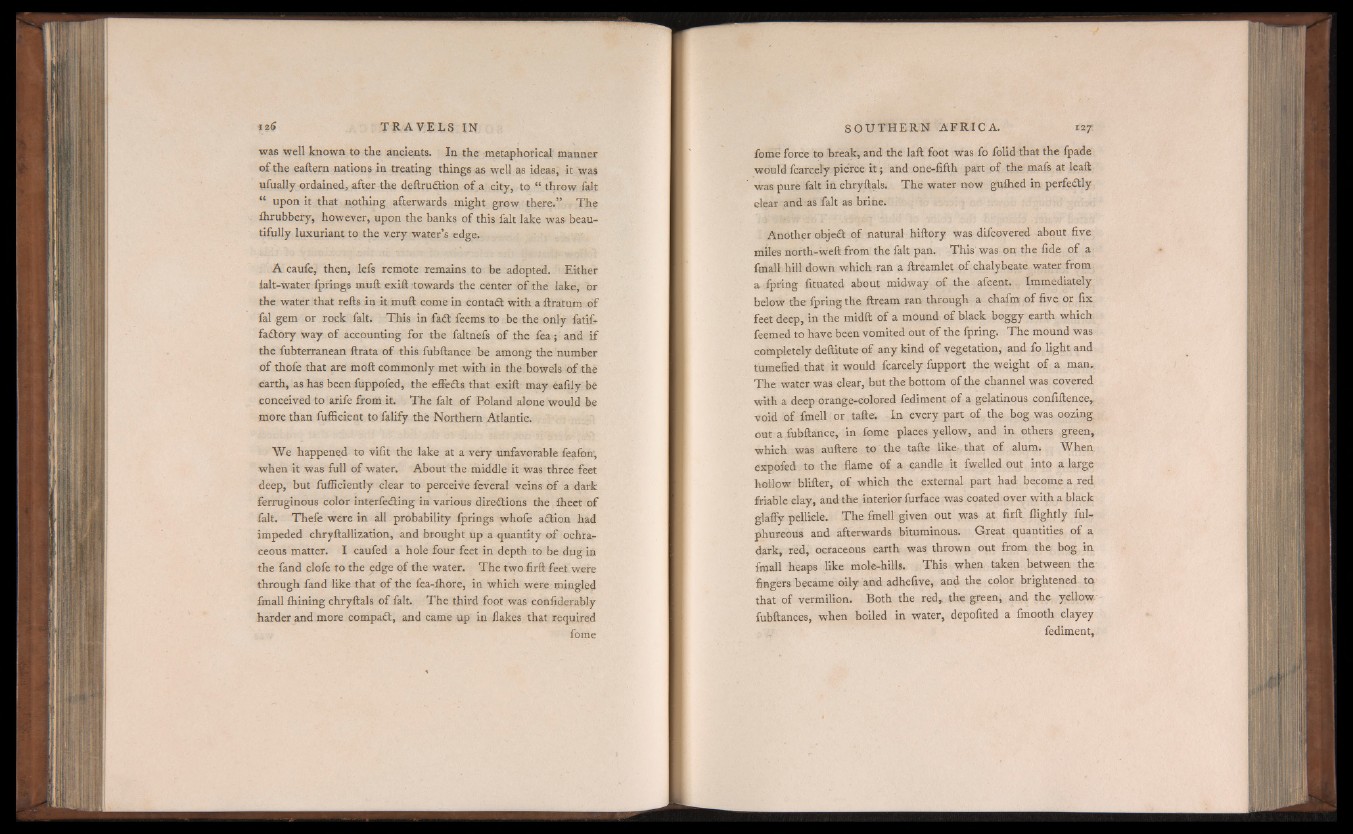
was well known to the ancients. In the metaphorical manner
of the eaftern nations in treating things as well as ideas, it was
ufually ordained, after the deftrudtion of a city, to “ throw fait
“ upon it that nothing afterwards might grow there.” The
flirubbery, however, upon the banks of this fait lake was beautifully
luxuriant to the very water’s edge.
A caufe, then, lefs remote remains to be adopted. Either
ialt-water fprings muft exift towards the center of the lake, or
the water that refts in it muft come in contact with a ftratum of
fal gem or rock fait. This in fad: feems to be the only fatif-
fadory way o f accounting for the faltnefs of the fea; and if
the fubterranean ftrata o f this fubftance be among the number
o f thofe that are moft commonly met with in the bowels of the
earth, as has been fuppofed, the effeds that exift may eafily be
conceived to arife from it. The fait o f Poland alone would be
more than fufficient to falify the Northern Atlantic.
We happened to vifit the lake at a very unfavorable feafon,
when it was full of water. About the middle it was three feet
deep, but fufficiently clear to perceive feveral veins of a dark
ferruginous color interfering in various diredions the fheet of
fait. Thefe were in all probability fprings whofe adion had
impeded chryftallization, and brought up a quantity of ochra-
ceous matter. I caufed a hole four feet in depth to be dug in
the fand clofe to the edge of the water. The two firft feet were
through fand like that of the fea-fhore, in which were mingled
fmall ihining chryftals of fait. The third foot was confiderably
harder and more compad, and came up in flakes that required
fome
fome force to break, and the laft foot was fo folid that the fpade
would fcarcely pierce i t ; and one-fifth part of the mafs at leaft
was pure fait in chryftals. The water now guftied in perfedly
clear and as fait as brine.
Another objed of natural hiftory was difcovered about five
miles north-weft from the fait pan. This was on the fide of a
fmall hill down which ran a ftreamlet of chalybeate water from
a fpring fituated about midway of the afcent. Immediately
below the ipring the ftream ran through a chafm of five or fix
feet deep, in the midft of a mound of black boggy earth which
feemed to have been vomited out of the fpring. The mound was
completely deftitute o f any kind of vegetation, and fo light and
tumefied that it would fcarcely fupport the weight of a man.
The water was clear, but the bottom of the channel was covered
with a deep orange-colored fediment o f a gelatinous confidence,
void of fmell or tafte. In every part of the bog was oozing
out a fubftance, in fome places yellow, and in others green,
which was auftere to the tafte like- that of alum. When
expofed to the flame of a candle it fwelled out into a large
hollow blifter, of which the external part had become a red
friable clay, and the interior furface was coated over with a black
glaffy pellicle. The fmell given out was at firft flightly ful-
phureous and afterwards bituminous. Great quantities of a
dark, red, ocraceous earth was thrown out from the bog in
fmall heaps like mole-hills. This when taken between the
fingers became oily and adhefive, and the color brightened to
that of vermilion. Both the red, the green, and the yellow^
fubftances, when boiled in water, depofited a fmooth clayey
fediment,